Italian gastronomy is popular all over the world thanks to its ancient and varied pastry tradition as well. Local patisserie differs from region to region, and in each territory there are sweet specialties that enhance its typical ingredients and carry on its popular customs.
In this article we have selected 20 typical Italian desserts, one per region, to take you on an exquisite journey from Aosta Valley to Sicily.

The best of patisserie in 20 typical Italian dessert

The Bel Paese dessert culture is not just a simple ending to meals, the last pampering for our palate, but a proper experience that can bring us even closer to the culture and the essence of the single regions.
For whatever you choose as your destination in Italy, if you take an approach to the confectionery art treasures, you will discover that every cake, every cookie and every snack talks about the territory in which it was made, its history, its traditions and its typical products, which perhaps reach a maximum level of exaltation precisely in it.
Whether for breakfast or after dinner snack, with coffee and amaro, some of our traditional desserts would need no introduction, while others are undeservedly unknown outside their region. That's why we want to take you on this exquisite journey across the peninsula with 20 typical Italian desserts, one for each region, so you can reappreciate or perhaps discover them.
Listen to the podcast version of "Typical Italian Dessert" with the voice of Mona Lisa and Leonardo
20. Maritozzo from Latium

The maritozzo is a classic pastry from the Lazio region, generally eaten for breakfast in Rome cafés and bakeries. It is a small loaf of flour, eggs, honey, butter and a pinch of salt, which is cut in half and filled with whipped cream.
Its origins date back to Ancient Rome, when it was eaten by the humblest citizens; during the Middle Ages it became the typical Lent dessert and then became the delicacy that accompanied wedding vows, so much so that engagement rings were sometimes hidden inside it.
Taste the real Maritozzo in a tour in Rome19. Tenerina cake from Emilia Romagna
Among the typical Italian desserts we cannot fail to mention the tenerina cake, a specialty from Emilia Romagna you will find in most of the restaurants and pastry shops there.
It is a typical cake from Ferrara city also called “torta regina del Montenegro” (cake for the Montenegro Queen) or “Montenegrina” in honor of Elena Petrovich of Montenegro, wife of the King Victor Emmanuel III, as it was first prepared for her.
The main ingredient is the dark chocolate, which is mixed with eggs, butter and a pinch of flour, in order to create a soft, moist texture that melts in your mouth, so much so that it is locally called "taclenta," "sticky."
18. Tiramisù from Veneto
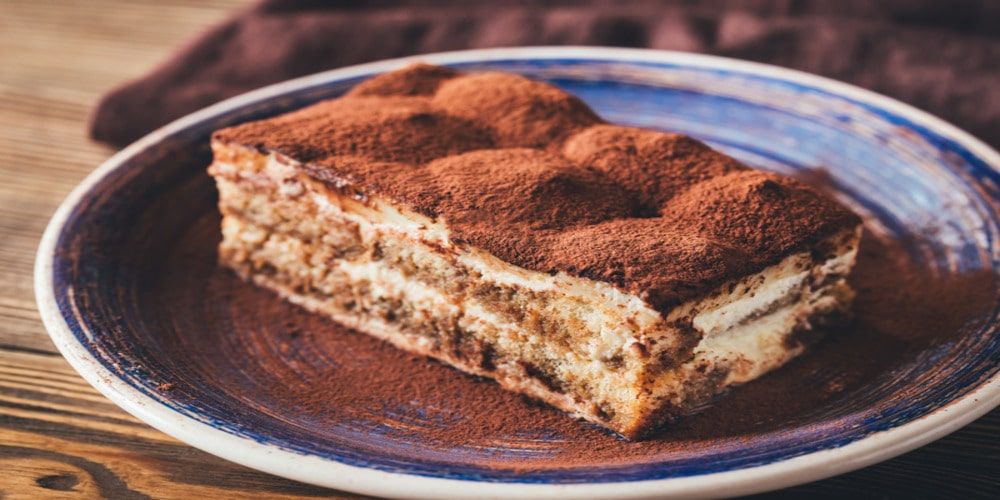
The world's most famous and beloved among traditional Italian desserts, tiramisù is a masterpiece made of ladyfingers dipped in coffee and covered with a mascarpone, eggs and sugar cream, sometimes flavored with liqueur, and sprinkled with cocoa powder - the perfect after-dinner treat.
According to tradition, an archaic version of tiramisu originated in Treviso in the 19th century, from the peasant sweet sbatudin, or classic eggnog, which was used precisely to strengthen, to “pull up”, as the name Tiramisù means; the current form we know has existed only since the 1970s, however.
17. Strudel from Friuli Venezia-Giulia
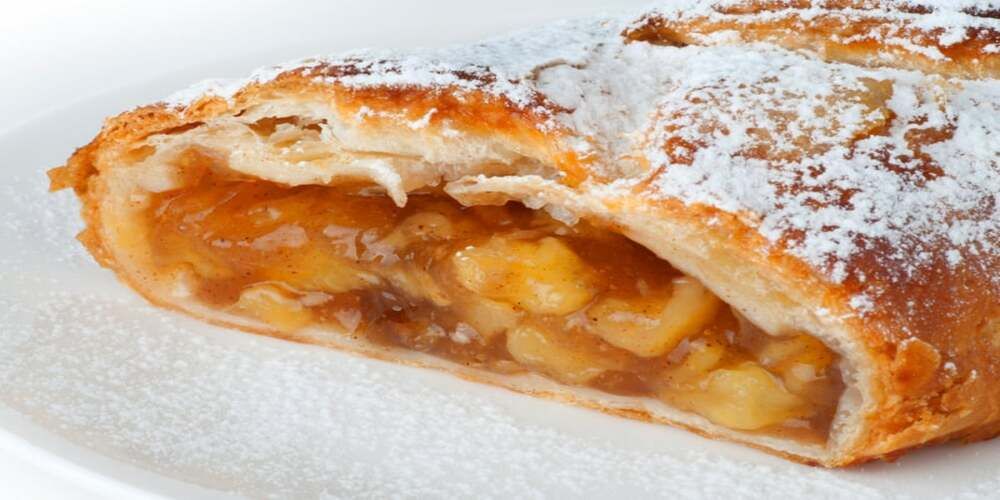
Strudel is a typical North European pastry but is also widely consumed in our northern regions, such as Friuli Venezia-Giulia.
Its origins are lost in the mists of history, and very similar examples can also be found in the Middle East, Greece and the Balkans. However, the closest version to the present one would date back to the time of the Austro-Hungarian Empire, of which the northeastern part of Italy was a part and where it later spread, taking on local features and receiving the designation 'Traditional Italian Food Products'.
It is made of a puff-like dough, wrapped and stuffed with a sweet-smelling filling of apples, pine nuts, raisins and cinnamon. It is often paired with cream or, for gourmands, an ice cream ball.
16. Cantucci from Tuscany
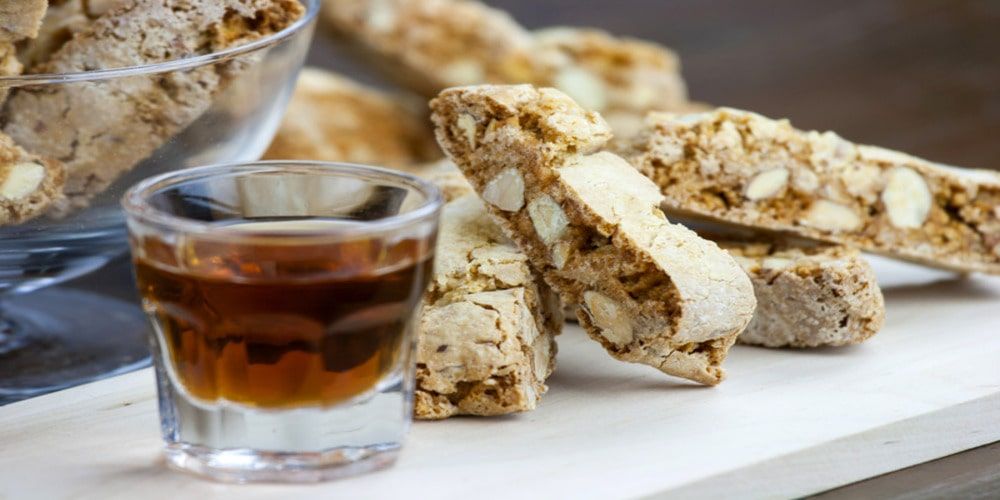
Let's leave cakes aside for a moment and focus on cookies, or biscotti, another unmissable and worldwide loved delicacy of Italian patisserie.
We are in Tuscany and we cannot leave out the world-famous cantucci, dry almond cookies made by slicing the dough loaf while it is still warm; they are usually accompanied with the vin santo, a sweet dessert wine, for a light but equally decisive and flavorful after-dinner treat.
According to historical sources, these typical Italian cookies date back to the 16th century and were mainly made in Pisa but currently can also be enjoyed in Siena, Florence and throughout the region.
Do not miss the authentic cantucci in a visit in Florence15. Seadas from Sardinia
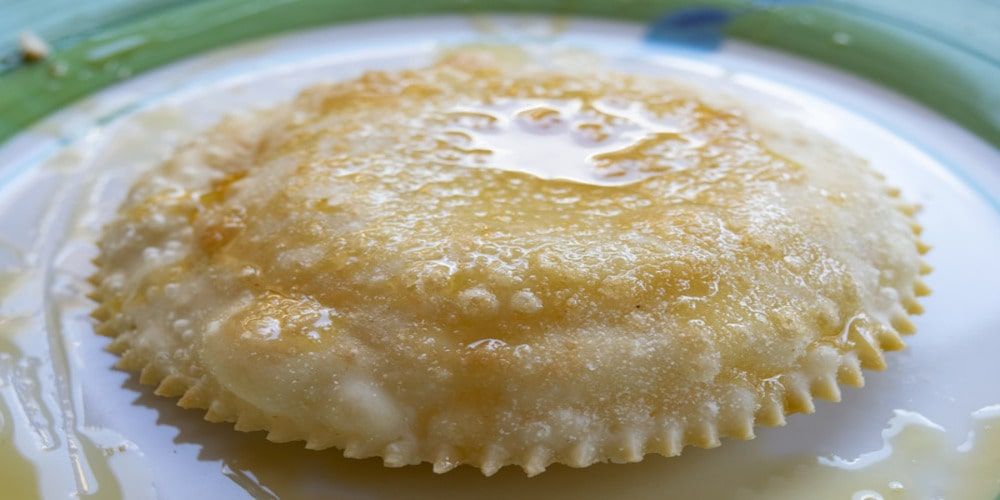
Seadas are made from a semolina and lard dough, which is rolled out and divided into two halves to hold a cheese filling, to be fried and finally topped with arbutus or chestnut honey (or sugar eventually).
A symbol of Sardinian cuisine, seadas probably owe their name to cebada, a cereal consumed by the island since Paleolithic times, while others argue that it derives from the Sardinian word sebu meaning animal fat. Over time the dessert has been reinvented and cooked cheese is used instead of the raw one in certain preparations.
14. Pannacotta from Piedmont

Let's move to Piedmont for a simple and soft dessert, the pannacotta, that sounds like "baked cream". This kind of pudding is made by combining cream, sugar and gelatine (to solidify the mixture once placed in the refrigerator), flavored with seeds from a vanilla bean and finally enriched with caramel, fruit or chocolate syrups.
This dessert dates back to the early 20th century and its goodness enchanted even the Italian poet Giacomo Leopardi, who mentioned it in one of his poems. Apparently, the present recipe is owed to chef Ettore Songia, a famous restaurateur from Cuneo who is said to have conceived it in the 1960s.
Taste all the typical Piedmont desserts in a dedicated tour in Turin13. Babà from Campania

This leavened pastry would certainly need no introduction, but we still wish to say something about it. The babà, king of Neapolitan pastries along with the sfogliatella and the pastiera, is eaten in all the cafés and pastry shops of Campania, either in the form of a cake or as a single pastry, and it is inevitable among the mignons, the small pastries, that frequently complete Sunday lunch.
Its origin seems to date back to the exile in France of Polish King Stanislaus Leszczinski, who used to consume kugelhupf, a Slavic dessert to which he added rum. Thanks to Maria Carolina of Habsburg Lorraine, wife of the King of Naples Ferdinand IV of Bourbon, the baba reached Naples, where it was made on her wedding day by the best French chefs. From then on, its preparation spread throughout the city, becoming one of its hallmarks.
12. Cassata from Sicily
An icon of Sicilian patisserie, cassata is one of the best-known typical Italian desserts all over the world.
It can be found in the form of a cake with a base of sweetened sheep ricotta cheese, sponge cake, royal pastry and candied fruit. There are various versions along the island depending on the composition, with, for example, the use or not of candied orange peel, pistachio, pine nuts, chocolate, cinnamon and orange blossom water.
The origin of the dessert is said to be Arabic and is more precisely located in the kitchens of the Emir's palace in Palermo. The recipe subsequently underwent modifications during the Norman era and the 17th century, and the current version was arrived at in 1873, thanks to Palermo pastry chef Salvatore Gulì. However, the frosting coating and candied fruit did not take hold until the late 19th century. There is also a tiny single-portion version, the “cassatina.”
Explore Sicily to enjoy all its specialties]11. Tegole from Aosta Valley
Let’s go back to our beloved biscotti and move to the Aosta Valley to enjoy Tegole, the Italian for roof shingles. These are thin, crunchy cookies, so nicely named because of their shape and texture.
They are made with a dough of almond and hazelnut flour, butter, egg whites and sugar and can be enjoyed throughout the region, often accompanied by a luscious mascarpone cream, or the delicious Crema di Cogne, a chocolate mousse that also rules among the dessert specialties of the Aosta Valley. Alternatively, they are perfect for breakfast or afternoon tea.
10. Sbrisolona cake from Lombardy

A famous cake from the city of Mantua, sbrisolona is one of the most beloved traditional Italian desserts in its homeland but poorly known abroad.
It was introduced to our pastry in the 17th century, at the time of the Dukedom of Gonzaga, and is a reworking of a poor dish that was later made more “refined.”
It consists of an irregular, crunchy, crumbly base made from a mixture of white flour, almond flour and corn flour, eggs, butter, sugar and whole almonds. Its uniqueness, that generates the name, lies in the fact that it can be broken up with the hands and not with a knife to be eaten.
9. Strauben, from Trentino South Tyrol
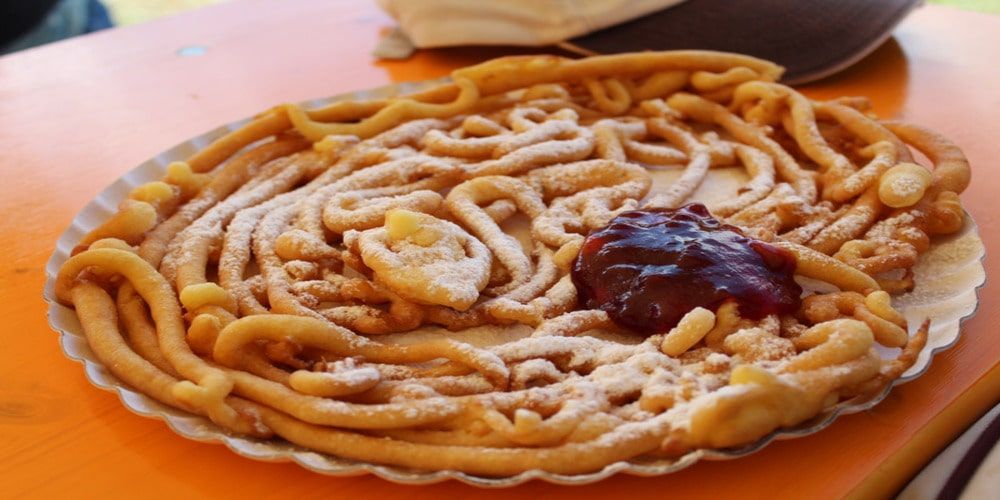
The scent of Strauben, or strabioli, immediately transports us to the beautiful lands of Trentino South Tyrol, amid the winter snows and mountain scenery, where they can be enjoyed piping hot at stalls.
They are spiral pancakes made from a mixture of flour, butter, milk eggs and a few drops of grappa, then fried in boiling oil to form rolled twists. They are finally covered with powdered sugar and blueberry jam. To obtain their characteristic shape, the dough is dripped directly into the oil through a kind of funnel.
They’re generally eaten at Carnival but can be enjoyed all year round.
8. Canestrelli cookies from Liguria
Who doesn't know the famous flower-shaped cookies with a hole in the middle? Canestrelli are an institution among traditional Italian desserts and in Ligurian patisserie and are an ideal accompaniment to a cup of tea or a cappuccino.
The origin of canestrelli is very old and goes back to propitiatory rituals to ingratiate themselves with the goddess Ceres so that she would facilitate harvests, but according to others it would recall the 19th-century custom of making small pastry baskets (literally “canestrelli”) at Easter time in order to store colored eggs in them. Over time, the baskets shrunk to be eaten and took on the shape by which we know it today.
The recipe calls for a very simple dough of flour, eggs, sugar, butter and vanilla, which make these cookies fragrant and crumbly, almost melting in the mouth. The final touch is to simply dust them with powdered sugar, but it is not uncommon to find them with a white or dark chocolate coating.
Enjoy other Ligurian delicacies in Genoa7. Ciaramicola cake from Umbria
Not so well-known among typical Italian desserts, the Ciaramicola is an institution in the Umbrian patisserie. It is generally eaten during Easter, when in ancient times lovers gave it as a gift to their sweethearts, but it can be found quite easily all year round.
The two peculiarities of this cake are its cross-shaped center, recalling the Passion of Christ, and its bright red color. This is due to the use of Alchermes, the crimson liqueur known for its coloring power, which is added to the mixture of flour, yeast, eggs, sugar, butter and lemon zest. It is finally covered with a glaze of egg whites and colored sprinkles.
6. Scroccafusi pancake from Marche
Among the lesser-known typical Italian desserts we certainly find this Marche delicacy, a classic of the Carnival period that can also be enjoyed at other times of the year, however.
Scroccafusi are small pastries from the local folk tradition, whose somewhat onomatopoeic name recalls their crispiness and invites a bite; they are irregularly-shaped pancakes, with a very simple dough of flour, sugar, eggs, butter and a dash of liqueur (Sambuca or Mistrà), which are leavened, then boiled and later fried in oil to give them the crispy texture-although tradition calls for them to be baked in the oven. Finally they are sprinkled with powdered sugar, honey or Alchermes to give them a vibrant red color.
The secret to make them perfect? According to tradition, do not disturb the person who is preparing them for any reason.
5. Pan Ducale from Abruzzi
Let’s move to Abruzzi for a truly delicious dessert with a very ancient history, the Pan Ducale, a kind of plum cake from the area of Atri, in the province of Teramo, which over time has become a symbol of pastry making throughout the region.
It is a reinterpretation of a peasant dessert, the almond pizza, which in 1352 was offered by citizens to the Duke Acquaviva, head of the Dukedom of Atri, to endear himself to him, and was even renamed in his honor.
The recipe that charmed the nobleman involves a base of flour, eggs, butter, candied fruit, dark chocolate chips and, of course, almonds.
4. Pasticciotto from Apulia
It is really impossible to visit Puglia and not taste an exquisite pasticciotto. Typical of the Lecce area, pasticciotto is a small cake, a dome-shaped bite with a soft short pastry dough and a delicious custard filling.
This symbol of Salento cuisine was invented in 1745 by Andrea Ascalone, a pastry chef from Galatina, in the province of Lecce, who invented it while experimenting with cakes leftover. The result was disappointing and he considered a “pasticcio”, a “mess”, he almost wanted to get rid of it but fortunately gave it as a gift to the local parish priest, who instead liked it and promoted it - and the rest is history.
Today the pasticciotto has several delicious variations - cream and black cherry, pistachio, chocolate and so on.
Visit Lecce and try the pasticciotto3. Laganedd from Basilicata
Laganedd are traditional Lucanian pastries, a delicacy, again, with a very ancient history.
Typical of Stigliano, a city in the province of Matera, but widespread throughout Basilicata, they are linked to the figure of the spigolatrice, the woman who in past centuries, once the grain ear harvest was over, would gather all that was left in the fields, particularly almonds and grapes, and with them prepare delicious treats. The name recalls lagane, a particular pasta format from Lucania, which was prepared with a hammer called a laganatore, the same one used to crush the dough for this desserts.
The present-day recipe for Laganedd has remained fairly unchanged: a crispy shell of flour, eggs, extra virgin olive oil and white wine and a filling of almonds, raisins, dark chocolate, cinnamon, cloves and honey.
2. Milk Pan from Molise
Although its name sounds somewhat foreign, the Milk Pan is an actual Italian specialty, from Molise to be precise. This delicacy from Campobasso was invented in the 1960s in the Iannetta bakery, which still produces it today with pride and love.
It is a small dome-shaped cake with a fluffy, fragrant base and a topping of hazelnut cream and white chocolate. The dough is prepared with flour, sugar, eggs, almonds and butter and is enriched with a special yellow liqueur, the Milk, precisely, an original mixture of herbs soaked in alcohol and finally combined with milk. The Iannetta family's idea was to exploit this exquisite nectar in confectionery - and we believe they really succeeded.
1. Pitta ‘mpigliata from Calabria
We have arrived in Calabria to talk about pitta 'mpigliata (or 'nchiusa), a dessert that belongs to the province of Cosenza.
This typical Italian dessert was invented in the 18th century, when it was mainly eaten during wedding ceremonies, while today it is a must at Christmas parties, although it can also be found at other times of the year.
It is eye-catching because of its distinctive shape, which resembles a rose, and its name comes from Hebrew (pitta means “crushed”). It is made with a spicy, fragrant pastry made from flour, oil, wine, cinnamon, orange peel and juice, which is rolled out and cut into serrated strips. These are then stuffed with a filling of walnuts, raisins, cloves, honey and a small glass of anise liqueur and rolled on themselves to take on the floral appearance already mentioned.
The 20 typical Italian desserts of our regions

We have come to the end of our journey through the 20 typical Italian desserts from our regions, and we know we have caught your eye and, above all, intrigued you.
The one in native patisserie is a journey within the journey, an additional stop on your tourist route that you absolutely cannot leave out; now all you have to do is choose which territory you would like to be sweetened by.
About the author
Written on 02/09/2024

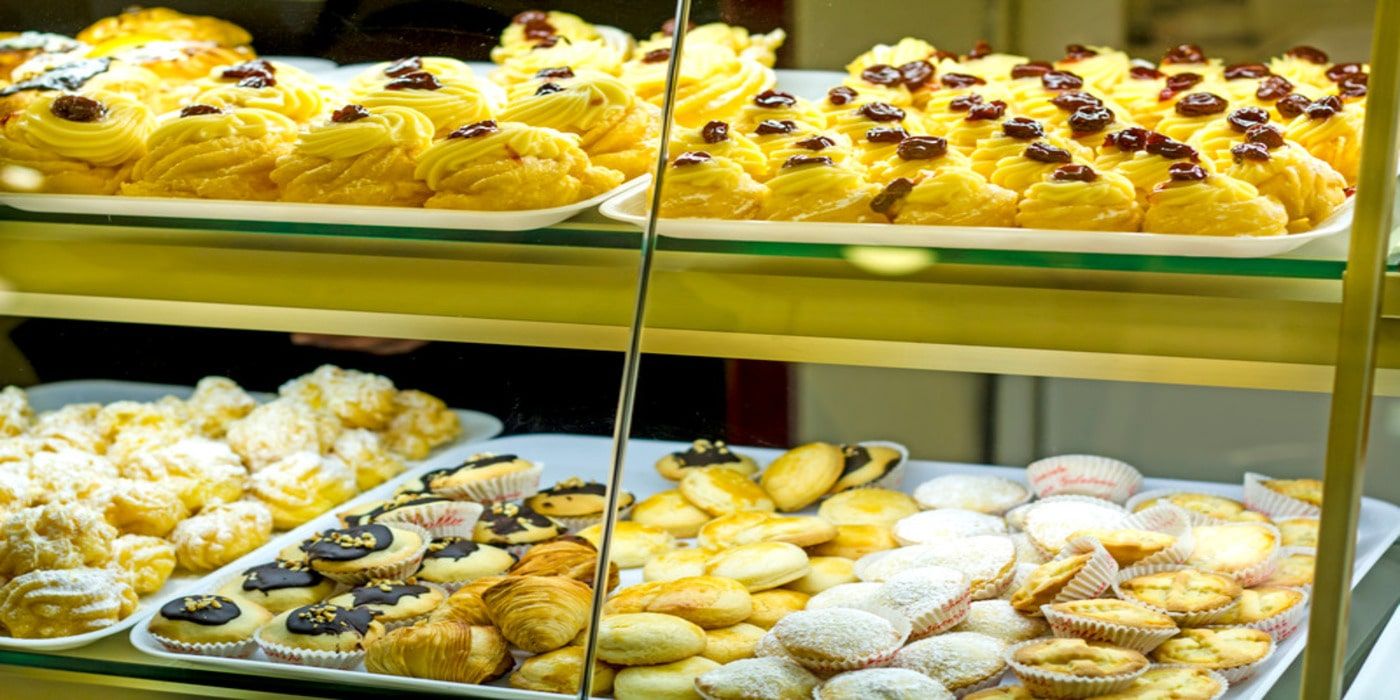

Maria Vittoria Gardelli
Italian patisserie, in its regional aspects, is a bite-by-bite discovery: let's treat ourselves with 20 typical Italian desserts from north to south